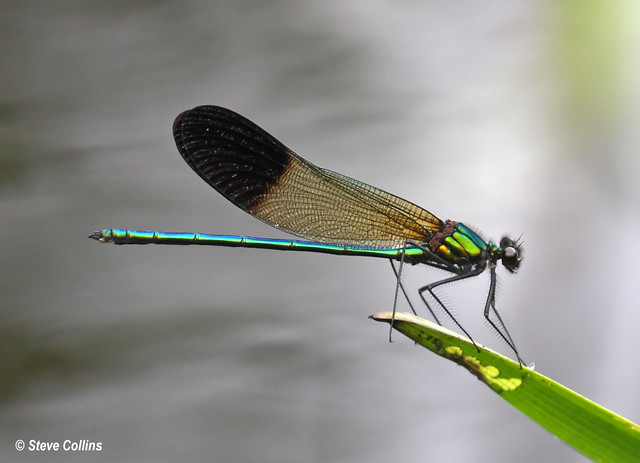Map Snapshot



2 Records
Status
Calopteryx aequabilis is a primarily northern species which has been detected as larvae in Maryland. It inhabits streams to medium-sized rivers with good water quality and extensive aquatic vegetation. It may occur with Ebony Jewelwing, but will also use larger rivers than that species (Paulson, 2011).
Seasonality Snapshot
Source: Wikipedia
| Calopteryx aequabilis | |
|---|---|

| |
| Scientific classification | |
| Domain: | Eukaryota |
| Kingdom: | Animalia |
| Phylum: | Arthropoda |
| Class: | Insecta |
| Order: | Odonata |
| Suborder: | Zygoptera |
| Family: | Calopterygidae |
| Genus: | Calopteryx |
| Species: | C. aequabilis
|
| Binomial name | |
| Calopteryx aequabilis Say, 1839
| |
Calopteryx aequabilis, the river jewelwing, is a species of broad-winged damselfly. The species was first described by Thomas Say in 1839.[2] It is one out of the 170 species of the Odonata found from northeastern Alberta to Newfoundland and southward in most of northern part the United States.
Description
[edit]The male has a metallic blue-green body and black wing tips. The female is duller brown with smoky wing tips that have white spots near the tips. The naiad is pale brown with darker markings.[3][4]
Habitat
[edit]It lives near small to moderate forest streams.[3]
References
[edit]- ^ Paulson, D. R. (2017). "Calopteryx aequabilis". IUCN Red List of Threatened Species. 2017: e.T165005A65826235. doi:10.2305/IUCN.UK.2017-3.RLTS.T165005A65826235.en. Retrieved 6 December 2021.
- ^ Balaban, John and Jane (February 20, 2005). "Species Calopteryx aequabilis - River Jewelwing". BugGuide. Retrieved November 12, 2020.
- ^ a b "Species Page - Calopteryx aequabilis". Entomology Collection. University of Alberta E. H. Strickland Entomological Museum. Archived from the original on September 24, 2015.
- ^ Lam, Ed. (2004) Damselflies of the Northeast. Forest Hills, NY: Biodiversity Press, p.18.


